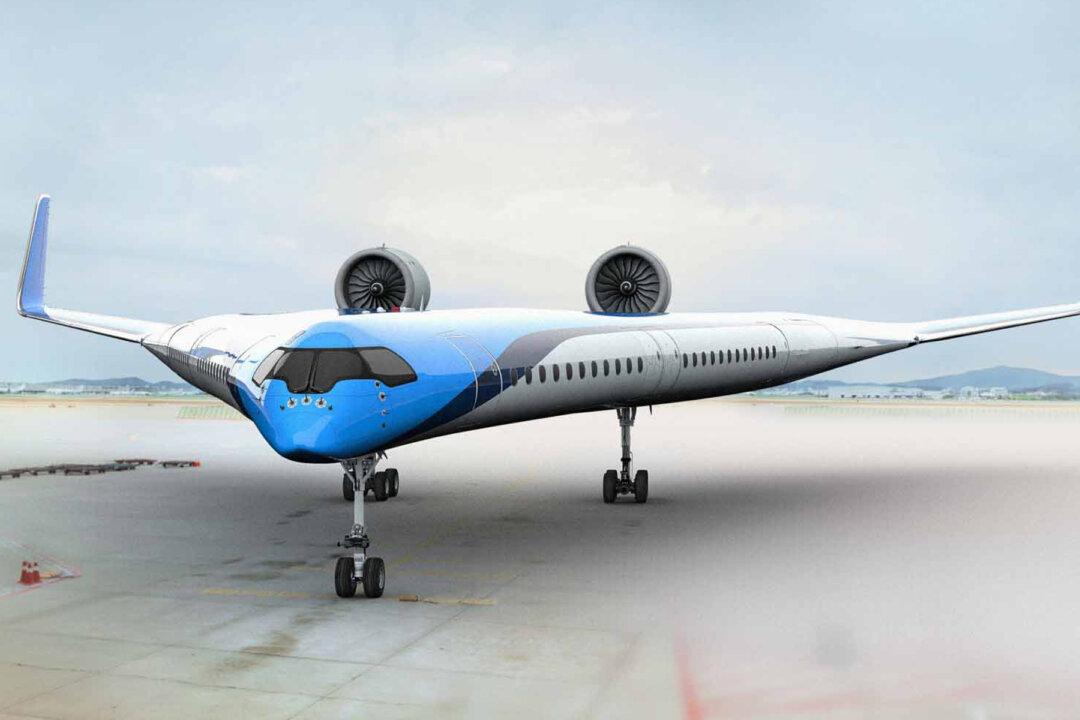Researchers have conducted a successful maiden flight of the “Flying-V,” a futuristic and fuel-efficient airplane that could one day carry passengers literally housed in its wings.
The Flying-V’s unique design places the passenger cabin, the cargo hold, and the fuel tanks in the wings, and experts hope that the plane’s aerodynamic shape will cut fuel consumption by 20 percent compared to today’s aircraft.





